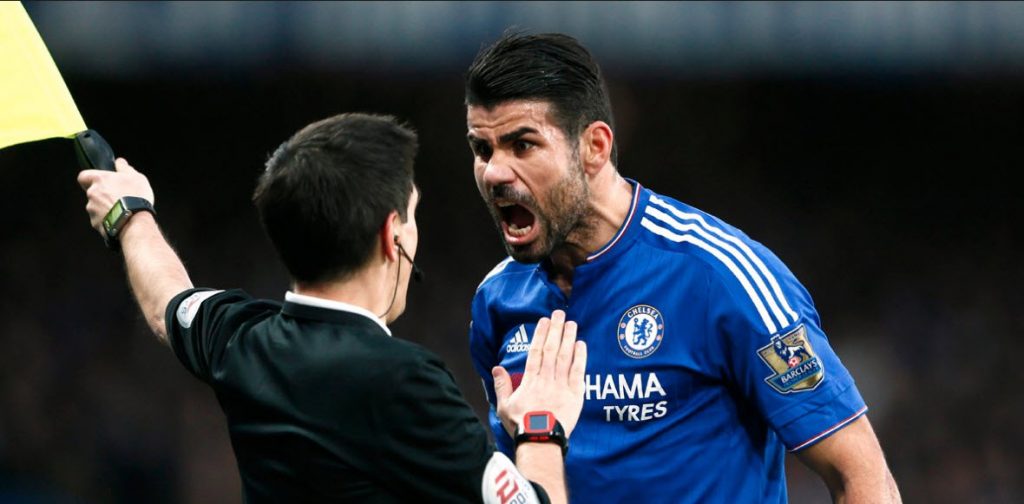28 Mar 2017
Using video replays to help referees
It is very interesting that the fashion amongst football Media Pundits is that now is the time to introduce video referees. Back in April 2015, I posted this blog about the very same thing.
In a past blog I argued that using technology in football – such as the TV official would be wrong. That football in this country sells and is successful around the World because it is a fast moving, dynamic, exciting game. That using technology would slow the game down and take away a huge amount of this controversy. I also argued that football relies on this controversy, in the vast majority of cases created by the officials, to sell the game.
But recently there have been a disproportionate number of really bad decisions that have massively effected games, their result and the entertainment value for the fans at the game and huge, worldwide TV audiences.
For example on Saturday March 21 2015, Man City played West Bromwich Albion in the Premier League. In the second minute of the game Albion’s right back Craig Dawson fouled Man City’s Wilfred Bony on the edge of the area, with Bony running in on goal. Referee, Neil Swarbrick meant to send off Dawson for the foul, but in a case of clear mistaken identity the referee sent off Albion’s center half Gareth McAuley instead of Craig Dawson.
On Sunday April 6 2015, Crystal Palace entertained Man City. Midway through the second-half, with Palace leading the game 2 – 0 and City laying siege to the palace goal. Palace centre forward Murray blatantly stopped a goal bound shot with his hand. But in a crowded penalty area, referee Michael Oliver and his assistant didn’t see the handball and so therefore could not give the penalty.
In both of these examples, if there had been a fourth TV official, almost instantly they would have seen that the wrong player was being sent off and could have informed Michael Oliver that the ball had clearly hit Murray’s hand and to give a penalty.
But, how is this technology to be controlled, so the game does not become stop start with almost every decision referred to the fourth official. Interestingly, after the Man City v WBA Albion game where the wrong player had been sent off, WBA Manager Tony Pulis said “This product (Premier League Football ) is one of the greatest products this country produces and sells all over the world, but it is no good moaning about referees. What we have to do is find a way to help referees out”.
He went on to suggest the following “I would definitely call now for managers to have two calls each and every game, where there are 30 seconds and they can have a video link-up with people upstairs who can watch it on video. It will eradicate the major decisions referees are getting wrong that actually affect games of football. We have to work hard to do that in what is the greatest league in the world. The sooner that comes in the better.”
So the suggestion is that Managers or head coaches have two calls – in a game, where they can refer a decision they think is wrong up to the fourth official. The fourth official then has a set time – say 30 seconds to review the footage and advise the referee accordingly.
How would this actually work? In the two examples above, the Man City V WBA Albion game, Referee Neil Swarbrick, with the game stopped, sends off the wrong player. WBA Manager appeals against the sending off. In the process, the fourth official has to decide, within 30 seconds – Does the foul warrant a sending off? If so, he would then have to inform the referee that he was actually sending off the wrong player. If not, no player is sent off.
In the second example, Palace V Man City handball by Murray. Man City Manager Manuel Pellegrini, would almost certainly have had a restricted view of the incident from the dugout. But, would have organised a communication system with his Captain, who would have immediately signalled for him to review the incident. The game is stopped. The fourth official now has 30 seconds to review the incident and inform the referee. The replays would clearly show a handball, the fourth official informs the referee and a penalty is given.
All very simple so far. But, this also poses a number of other questions, such as:
How long do the managers have to lodge and appeal – immediately? Within 5 – 10 seconds? Imagine the Palace V Man City situation – the ball is still live – Palace counter attack and within 10 seconds they have a goal scoring opportunity. It is hardly right or fair that Man City have the right to review the situation and stop the play just as Palace are about to score on the counter attack? Therefore, the appeal and review must take place within a very strict time frame to be fair.
Once the appeal and review is logged. The game will have to stop for at least 30 seconds for the fourth official to review and give a decision. If in the example of the palace game, the fourth official decided it wasn’t handball. Where and how does the game restart??
Then there are the very difficult and close decisions that will be very difficult to review and give a clear cut decision in 30 seconds, even with the help of slow motion replays. Again in the Palace V Man City game, Palace’s first goal scored by Murray had 3 potential offside decisions to it. All 3 were very close and even Sky pundits Gary Neville and Jamie Carragher, with the help of all their wonderful technology could not really prove that any of them were offside!! So cue more controversy!!
